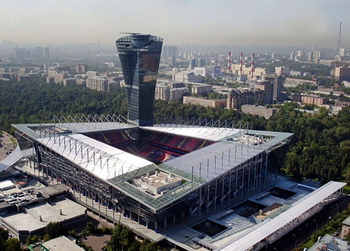
With every passing year, technology gets better and better. Admittedly we’re unlikely to ever get to the point where football supporters sit at home wearing virtual reality glasses and headphones instead of turning up to see the game in the flesh, but the development of television coverage and the like may well see the number of people attending games drop off significantly if football clubs aren’t careful.
There’s a large degree to which that’s more about ticket prices than anything else, of course, but there are still some things that owners and operators of clubs can do to ensure attendances don’t fall too low.
With that in mind, then, it’s worth having a look at the future of football stadiums.
How are they likely to change? What lies in store for supporters? Will the lower divisions follow the lead of the top ones, or is the gap between rich and poor only like to get worse? Will that development of technology lead to unexpected things in the future? If we knew what was going to happen in the days and years ahead of us then we probably wouldn’t waste that talent on predicting how football grounds are likely to change, so it’s fair to say that a lot of this comes down to guesswork.
Still, that’s the fun of such an article, isn’t it?
Bowl Seating
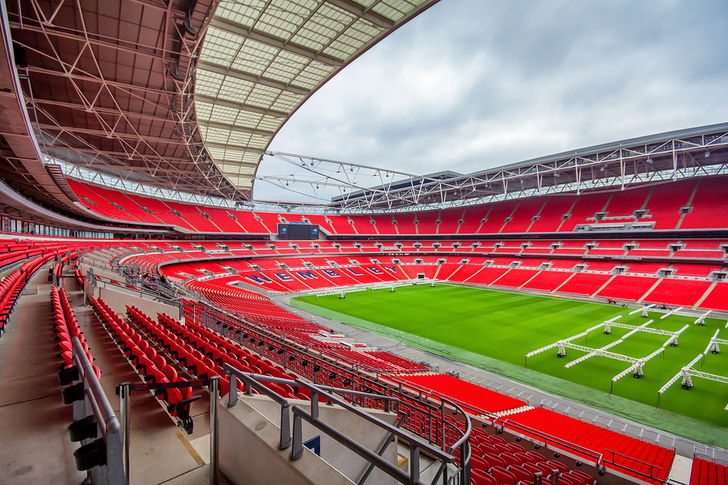
Back in the early days of football stadiums they were built around the design of the pitch. That meant a stand on each side of the grass, developing upwards from when the pitch was cut off from supporters by nothing more than a rope and a polite request not to push past it. Every stand was separate and distinct from each other, with no real connection between them in order to stop supporters moving from one side to another.
In recent years, however, a trend has grown for stadiums to be built in a bowl style, emanating from Europe and finding its way over to the UK with each new ground that is being built. There are numerous reasons why this design is becoming popular, not just because architects have adopted it as a trend. One of the main reasons why is that, as long as the design is good, they offer unobstructed views of the entire pitch from anywhere within the ground. A bowl style removes the need for stanchions to support a roof, which often causes obstructed views for supporters.
It is true that a classical style of stadium doesn’t automatically mean obstructed views. Anfield, the home of Liverpool Football Club, is a perfect example of this. The old Main Stand had large pillars that blocked the view of hundreds of supporters, but it was redesigned in 2016 to get rid of them and allow significantly more people into it at the same time. Even so, at the top corners of the stand there are still some obstructions that likely wouldn’t have happened if the entire stadium had been re-built as a bowl. That’s why it seems as though bowl seating is the future for major new stadiums.
Safe Standing
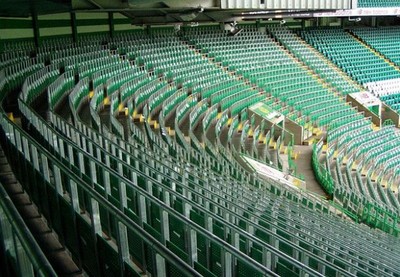
One of the biggest changes that’s likely to take place to stadiums in the UK in the near future will be the introduction of safe standing sections. Standing was abolished for the top clubs in the wake of the Hillsborough Disaster in 1989, in spite of the fact that it was police incompetence rather than standing that caused the death of 96 innocent men, women and children.
Ahead of the 2016-2017 season Celtic Football Club in Scotland introduced a safe standing section and it proved to be a big hit with their supporters. As a system it is significantly different from the terraces of old, which would essentially be a free-for-all where supporters were expected to ‘find their level’. They are much safer and an incident like Hillsborough would be nigh-on impossible to repeat.
At the moment many supporters stand during matches regardless of the no standing rule and that is unsafe standing. After all, you’ve got a chair in front of you that you might fall over in a moment of celebration or someone behind you might fall over them and land on top of you. It is virtually impossible for clubs to get entire sections of supporters to sit down, such is the unlikelihood of them dispelling thousands of people all at the same time. With that in mind, safe standing is the best possible way for football clubs to go in order to guarantee the safety of fans who regularly attend matches.
There’s another undeniable benefit of safe standing that clubs will be keen to take advantage of: increased attendance. The reason clubs will be happy to get more people through their doors is that increased attendance also means increased turnover on gates, which means more money. Football clubs will do many things, but turning down an opportunity to make more money has never been one of them. Fans won’t mind either, considering that getting into the ground at all is tricky for those that support the most popular clubs in the country. Whilst it’s possible that safe standing will face some opposition, especially from the families of Hillsborough victims, it now seems like that it will be introduced sooner rather than later.
Multi-Purpose Venues
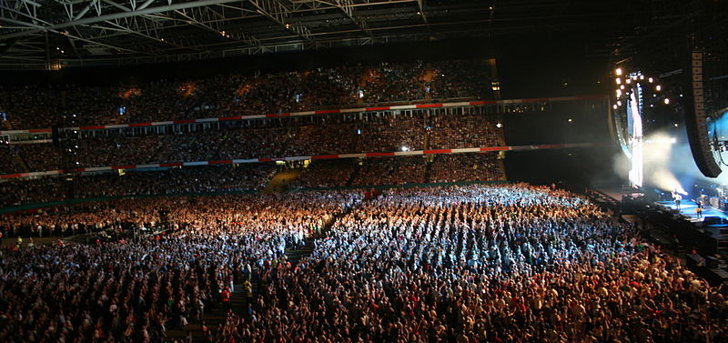
The theme of making money continues here, when you remember that more than a few clubs have hosted random sports in their grounds over the years.
Wembley Stadium has hosted matches for the National Football League, also known as American Football, several times since it was re-built and re-opened back in 2007. Some football grounds are used to doing this, with the DW Stadium being the perfect example. It is the home of both Wigan Athletic Football Club and Wigan Warriors Rugby League Football Club and both sports are played on the pitch their on a regular basis.
Yet hosting both rugby and football isn’t easy, considering the layout of the pitch is different for each sport, to say nothing of introducing something entirely different like the NFL. Rugby is also a much more physical sport, often resulting in the pitch being ripped up and damaged. That makes the lives of groundskeepers much more difficult at a time when football clubs are much more demanding and expect their pitches to look like they’re made of carpet.
Tottenham Hotspur decided to come up with a plan to deal with this problem when they announced the re-building of White Hart Lane. The stadium will feature a pitch that can be split into three and ‘hidden’ underneath the stands, revealing an astro turf pitch for different sports.
Introduction of Technology
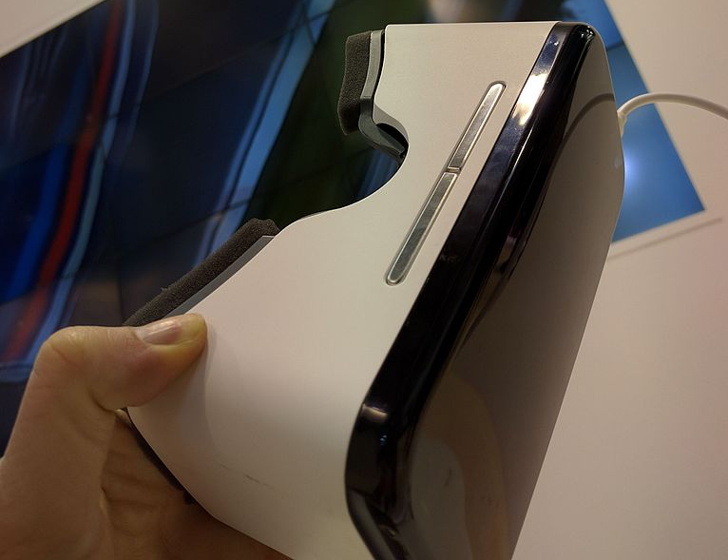
That might be courtesy of screens in the back of seats, for example, though it’s far more likely that clubs will take advantage of the supercomputers we all have in our pockets in the way of smartphones. The U.S. Bank Stadium in America is already leading the way with this, introducing over a thousand Wi-Fi access points around the stadium that allow supporters to order food and drink or merchandise from their seat as well as watch plentiful video content where available. Even just the introduction of reliable Wi-Fi would make a big difference for supporters, considering that at the moment any large collection of people results in an inability to connect to 4G services properly. The more that sections of fans want to commentate on games on social media, the more likely it is that technology will be developed to help them.
We joked about virtual reality glasses at the start of this piece, but that is also not out of the realms of the possible. The trick isn’t so much waiting for the technology, as it already exists, but it’s about figuring out how to take advantage of it. Could clubs that often find their capacity at full open areas outside the stadium where fans can watch the action through VR goggles, celebrating with each other and soaking up the atmosphere? If there’s an appetite for it from the fanbase and a way to monetise it then you can bet clubs will find a way to do it!
That technology will likely also be to do with the football taking place on the pitch, too. At the moment goal-line technology is the only development that has influenced play, but the trial of Video Assisted Refereeing in recent times suggests that won’t be the case for long. A future where cameras are posted all around the ground in order to capture every single moment of play to be fed back to a central location may well be the future of the game.
The Gap Will Get Wider

Every single thing we’ve mentioned so far will cost clubs money to implement. There’s a reason why it’s clubs like Tottenham, Liverpool and Chelsea that are developing and changing their grounds rather than League Two sides and that reason is that they can afford to do it. The more that changes like this are introduced, the more likely it is that lower league sides will get left behind.
More than a few clubs struggled when they had to change to be all-seater venues in the 1990s, so it’s just as likely that they’ll struggle to adapt to other sweeping changes in the future.
Doubtless there will still be an appetite for people to watch football in the ‘old fashioned way’, of course. For every supporter who wants to follow stats on their phone and watch replays on TVs in the back of their seat is another who would far rather let the football itself do the talking and they’ll happily go to lower league games if that’s what they need to do.
Unfortunately it may not be enough, especially as supporters mainly want to watch the club that they love play and it is hard to break that bond. If lower league clubs are unable to keep up with the changes then they may well find themselves left behind.
Conclusion
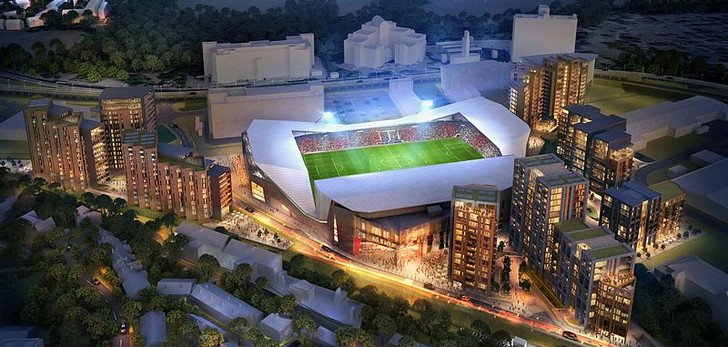
These are all educated guesses based on stadiums that either already exist or are in the planning stage.
The basics of football will never changes, but they way that we experience it almost certainly will.
From architects re-inventing the style of the stadiums themselves through to technology being introduced in the least intrusive way possible, the future of football grounds is an exciting one.
